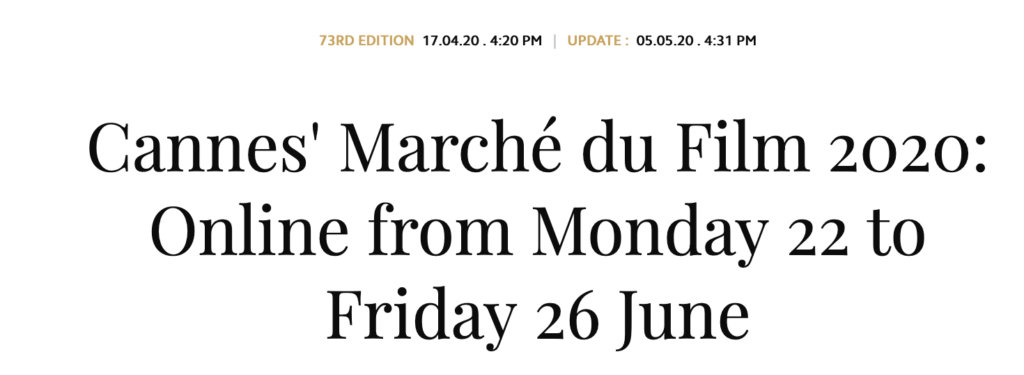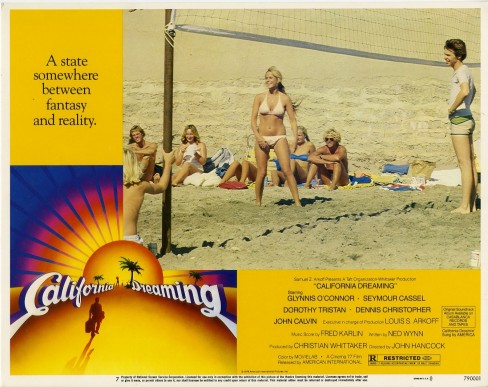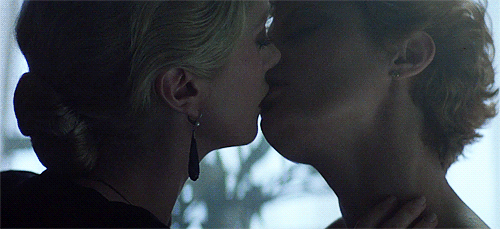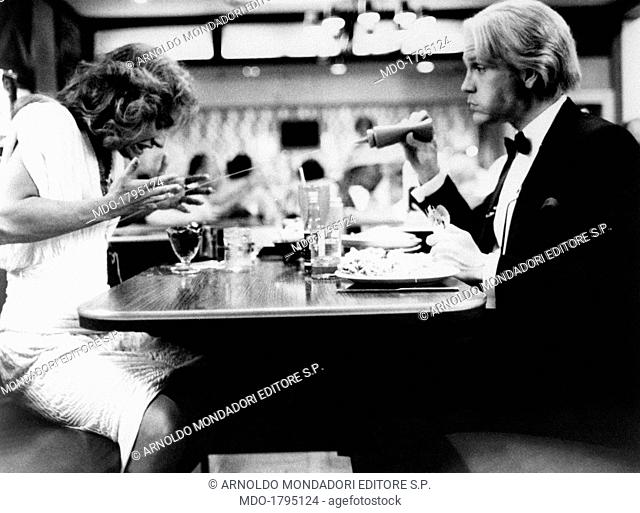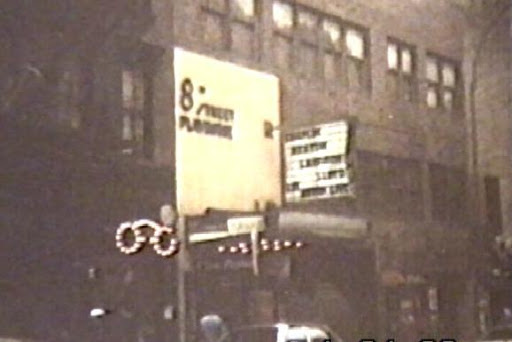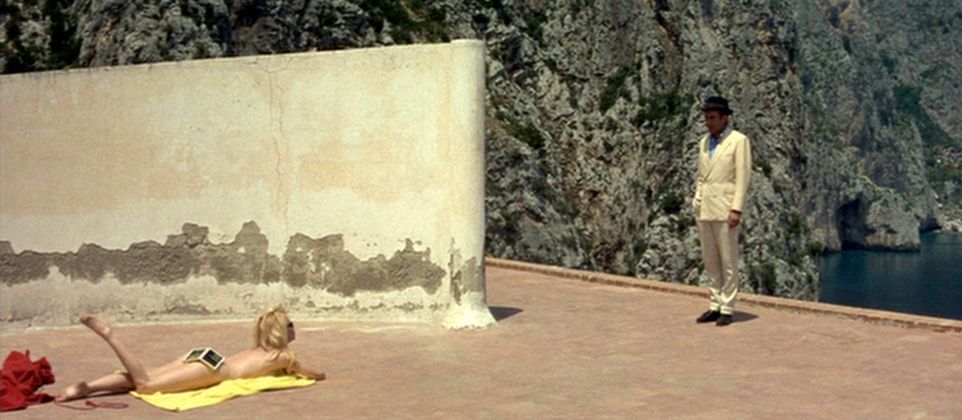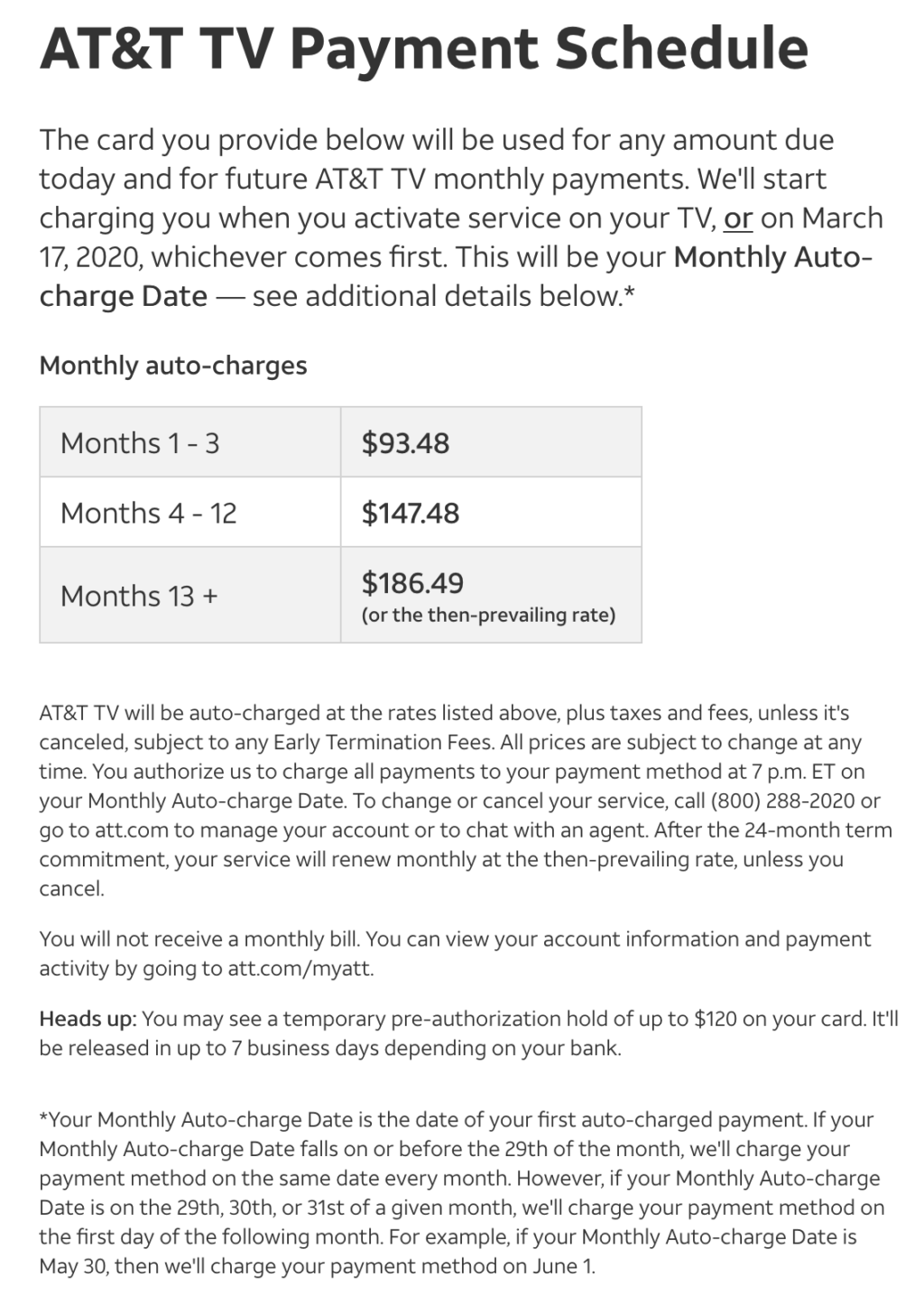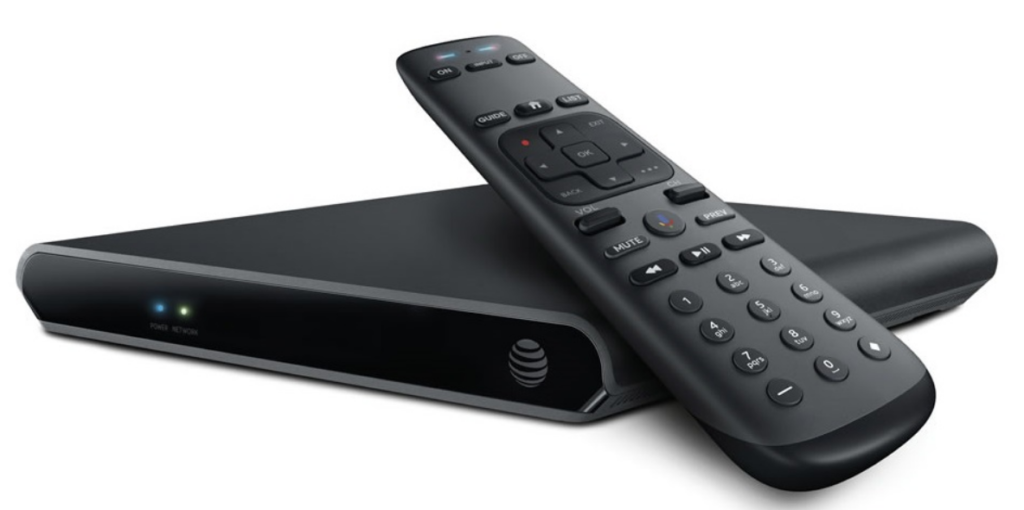“Theatrical is over.”
Yeah, yeah, yeah. I have been listening to this bullshit for decades. And if you read David Puttnam‘s “Movies & Money” (from 1997!), you will see that this line of gloom & doom and hipster pronouncements about The Future started coming up a century ago.
This morning, Indiewire published a piece by Anne Thompson, who is fully committed to the idea of the end of theatrical as we know it and has been for a while. She rolled out a pretty complete rationale for this notion. And besides being soaked through with inaccuracies and errors of omission, there was an anger involved that took my breath away.
I will link after quoting the most offensive paragraph:
“Exhibitors are very different from their studio partners. Both groups are largely comprised of white men, but theater owners tend to reflect mainstream tastes and fairly conservative politics. (Imagine a Hollywood executive signing off emails like one Cinemark staffer: “Oh give thanks to the Lord, for He is good, for His steadfast love endures forever. Ps 107:1.”) As a whole, this group prefers PG-13 to R ratings, and worships Dwayne “The Rock” Johnson and all things Disney. They largely work out of their headquarters, whether that’s Kansas City (dominant AMC, with 8,000 screens), Dallas (Cinemark and Studio Movie Grill), New Orleans (Southern Theatres), Milwaukee (Marcus Theaters), Scottsdale (Harkins), Memphis (Malco), or Knoxville (Regal). It’s hard to imagine most of these folks circulating at world-class film festivals. The buyers who do attend are there for their specialty screens.”
Here is the full piece. But… REALLY?!?! Anne wants to encourage us against theatrical exhibition because their corporate offices aren’t based in Los Angeles or New York? She wishes us to see them as rubes because there are some staffers who express their religious beliefs in e-mails? And she doesn’t seem to want us to think about the fact that AMC’s ownership through much of the last decade was in Beijing and Regal’s is still in London. “It’s hard to imagine most of these folks circulating at world-class film festivals.” Are you seriously this petty and ignorant? I have known Anne a long time. She is neither of those things. But Jesus Christ on a cracker, she is writing like she is.
I have spent about as many years at CinemaCon/ShoWest as Anne, wandering about Vegas for 4 days in a sea of short-sleeved button downs and candy samplers. I understand the stereotype. But I also have now decades-long friends from all across Europe thanks to ShoWest (the original title of the exhibition event). I witnessed years of negotiations leading to digital projection, better sound, geographic multiplex placements, and stadium seating choices amidst all those… (say it mean) middle-Americans.
But let me get to the meat of Anne’s many arguments instead of lingering in my shock and dismay over the tone of this paragraph.
Unfortunately, I find myself refuting most of the article… there was a web term for doing this, which I forget. (Fisking?) But I try not to do it. But I must, I must.
“Studios and exhibitors still bring movies to a paying audience, but approach it from wildly different perspectives. Studios have multiple revenue streams; theaters have butts in seats, and buttered popcorn. Studios want the flexibility to take their movies to other platforms if that’s the better business decision; exhibitors leave a lot of patron data on the table — and charge studios access for what they do collect.”
False, at least in what is being suggested. Facts. Studios have had multiple revenue streams for over 40 years now, not counting revival houses and broadcast television sales (which at one point topped $10 million for a single screening for E.T.). VHS. DVD. Rentals for both. A once-huge Direct-To business in DVD. And streaming, which has brought the major (and some minor) studios 100s of millions of dollars while they sat on their hands, letting Netflix run with the segment until they finally saw a way to make more money doing it themselves (eventually).
It is true that theaters have only ticket revenues and concession sales to pay their brick-and-mortar rents and for the many people they employ in support. But there is a suggestion that there is something new about all of this. There is not. The desire of major studios to cut the cost of theatrical release is decades old. The shortening of the theatrical window by studios? Decades old.
But what is truly misleading is the notion that, somehow, the relationship of distribution and exhibition hasn’t – no matter the disagreements – continued to progress to both sides distinct benefit over the decades. Forty years ago, hit movies played for 30 – 40 weeks in theaters. In 1990, Ghost didn’t go to 2nd run until week 38, never surpassing 1800 screens and missing the $1 million mark on only 1 week of those 38. By 2000, the top non-Grinch grosser, Mission: Impossible 2 had its last $1 million-plus weekend on Weekend 9. In 2010, Avatar had a strong run from Christmas into the spring, but still only had 13 $1m+ weekends. Toy Story 3 had 12.
How do we think this happened? Do we think the studios got super-smart all of a sudden and poof, the runtime on first-run movies magically dropped by two-thirds while maintaining similar box office totals?
Obviously not. No… the exhibitors and the distributors worked hand-in-hand to make the exhibition platforms of the 90s, 00s, and today supercharged. Exhibitors went through bankruptcies to do it, but they did it. Distributors wanted it because of DVD sales, the revenues of which were surpassing theatrical revenues… so distributors wanted to get to that cash cow as quickly as possible. But they didn’t want to give up theatrical revenues, which were still more than a third of total revenues on a movie, so the window was pushed shorter and shorter. And eventually, like a virgin on Lookout Rd, they said, “That is as far as you can go without compromising us completely.”
But the exhibitors/virgins were still putting out, keeping the exhibitors as happy as they could. Don’t get me wrong, I see this as a mutually beneficial relationship. Putting the audience aside, exhibition chooses to be there and distribution benefits enormously from the existence of exhibition and the adjustments that exhibition has made.
Here is a little example… digital projection. It took years to find the moment, the money, and the mutual will for this to become the norm. The estimate by people who counted the beans at studios was that studios would save $2 billion or more every year by not having to strike, ship, and maintain prints (God rest the format’s soul). After some bumps in the early days, exhibition has also been able to benefit greatly from the format shift. No more projection issues as we knew them. Fewer projectionists (sadly for those hard working committed men and women). Easy expansion to take advantage of big opening opportunities (accordioning, as I have called it over the years, aka, more actual playtimes on any given weekend as needed). Nearly instant delivery when needed. And the freedom to create events in theaters, like live theater, opera, and sports.
Do sprockets running through a classic projector with a bulb at proper wattage create a better experience of the image? Maybe. But honestly, that isn’t the point. That is a different conversation. But some people want to use this aesthetic argument – which obviously, the same people have regarding studio output – as some way of making exhibition seem like Luddites, hanging on to the past. This is just insulting bullshit. These are business people who have adapted to changing times, over and over and over again. And yes, many of them look like the aunts and uncles you left behind when you moved to the big city after college. But… don’t be an asshole.
Moving on…
“By night, there’s opportunities to schmooze with the studio distribution executives who represent an increasingly slim slice of conglomerates owned by AT&T, Comcast, Sony, Viacom, and Disney.”
Exactly as the exhibition business has become represented by an increasingly slim slice of conglomerates owned by multinationals. AMC, Regal, and Cinemark control more than half the screens in America and, for better or worse, the rest tend to follow their lead.
“Their awkward business partnership doesn’t lend itself to conversations; it’s designed for constant, often-rancorous negotiations over rental splits.”
What decade was this paragraph from? Yes, Disney re-opened the wounds a couple years ago with new demands, but rental splits have not been the major issue for this “couple” in many years.
“Theater owners will fight to the death to keep their exclusive 90-day window, but why can’t studios move poor theatrical performers to another platform right away, and extend the on-screen life of the ones that play? The exhibitors’ argument: Exclusivity is the only way moviegoers will keep coming to theaters.”
Again… just mean-spirited bullshit. And that doesn’t mean that there is no argument to be made for distribution’s desires here. But if you are spinning, there is usually a reason. The window, which used to be a year for pay-tv, then 6 months for DVD sell-thru (until Batman released their then-all-time-best-opening movie on DVD in November – 5 months after a June open – for the holiday sales benefit), has now been whittled all the way down to 90 days, which is already really 75 days before it goes to streaming.
Exhibitors aren’t arguing that windows are the only way moviegoers will still come to theaters. I don’t know anyone in exhibition who thinks it is the primary reason people go to theaters now. But what exhibition knows – and distribution clearly knows or they would have shoved everything into VOD by now – is that exhibition is a low-margin business and that to maintain the big boxes in the format in which they currently generate $40 billion+ a year in gross revenues and participate in creating brand value that benefits titles all the way through their ancillary revenue life, you need more than one kind of film. Because even though the media doesn’t value films that gross just $60 million in domestic box office or less, those films generated about 25% of total domestic box office last year (for instance). Take away that 25% or 20% or even 15% and exhibitors can’t make their rent unless studios want to subsidize their theaters with a higher percentage of the bigger grossers.
I’m going to keep my powder dry on this and write another column about what a reconfigured exhibition universe would look like at another time.
But what is the worst idea for marketing a movie ever? To keep moving it from one platform to another so the buyers have no idea where to find it. There is no faster road to ambivalence, then disinterest, and ultimately, “we’ll see it on streaming soon enough.” This is already an issue with shortening the theatrical window.
What anti-window people refuse to see is that once you are past the theatrical window, there is no big uptick in revenue now. But it will get smaller and smaller because all post-theatrical is the same to people at home. It will get much, much worse as everyone is in the streaming business. Disney might be able to sucker a few hundred thousand people into paying to rent Onward 2 weeks before pushing it to $7 a month Disney+, but if I had paid for that, I’d be calling the credit card company to dispute the charge. Individual unit sales are THE dying format.
Except in theatrical release.
‘During negotiations over “The Irishman,” Netflix’s Scott Stuber (a former head of Universal production) played mediator in trying to reach an accommodation on shorter windows. But the chains are not a unified group, and talks broke down.”
Uh, no. Netflix sought an accommodation for one title. The accommodation was agreed to by exhibitors. They had a shorter window. They had silence on grosses. They had the national chains. But there was one demand that Netflix would not acquiesce to… that they put a chunk of their marketing spend into pushing the theatrical release in the way major studio distribution supports most movies. Netflix refused. Deal over. I have no beef with Netflix taking whatever position on this that they like. But blaming the exhibitors for being in disarray or too unyielding is just more spin.
“Meanwhile, independent exhibitors, film festivals and distributors are taking a different tack: They pulled back from competition to pool their best practices and intelligence into launching a virtual cinema business. And when they did, they discovered a shared ability to reach cinephiles even when hunkered in their homes.”
Oh… bullshit again! Independent distribution has been fully engaged in the “virtual cinema business” (without the cinemas) for a decade. VOD has been a salvation in a still very tough market for indies. What changed under this quarantine is that they figured out – smartly – how to team with exhibitors and film festivals and the like to add a new layer of marketing to the effort. And what are the results? Please, tell us how much more money the indies are making during this disastrous moment? I bet sales are up. I bet the share with festivals and theaters eats that difference almost completely. But yes, good for them. Something is better than nothing. Good for cinema. Good for people. All good.
And this has NOTHING to do with how wide releases are released or monetized.
“If the studios and theaters were still aligned, the whole film industry picture would be very different. The theaters would not be abandoned and marooned, with only one way to make a living. Studios and theatres would have long shared the same ecosystem, reading data and innovating best practices for the ideal ways, times, and platforms to reach the consumer.”
Honestly… whose ass was this pulled out of? Please… take a moment to think about it. Think deeply. Because it is just a wistful theory with absolutely no argument to back it up.
What other way would brick and mortar theaters have to make a living if they were owned and operated by movie studios? Tell me! Someone! Anyone! Merchandise? Ha. Event programming? Already exists, to modest success. DVD sales as you come out of the theater? Are you kidding?
It all sounds so smart… “share the same ecosystem, reading data and innovating best practices for the ideal ways, times, and platforms to reach the consumer.” Seriously! What do we think this means in action? Have you been watching AT&T try to manage both DirecTV and the launch of HBO Max? Do you believe there is more money in giant Disney titles than is already being squeezed out in the billions? Do you believe that Trolls World Tour will have a stronger ancillary revenue stream with 4.5 million families renting it at home or 12 million people going to the movie theater to see it in excited groups?
Executives love control… until they come up short.
Ironically, I have long been a proponent of Netflix buying a small-ish exhibition chain to achieve their long-term goals. Why? All the reasons Anne seems to covet. But more to the point, Netflix, at this time, could run movie theaters without profitability being a principle motive. Their overall model is not profit-driven, which is why they have so little profit on $20 billion+ a year in subscription revenue. It’s by choice. (And that is a different column too.)
If Netflix had bought the Landmark chain when it was for sale, it could have been their best marketing tool ever. Because Netflix is and always has been about the freedom of consumer choice. Owning about 100 screens in 20 or more major markets would allow them to try out a ton of ideas… and again, they wouldn’t have the pressure of making money. So long as they made 50% of costs or more, it would be viable for them (in my opinion… it’s their money). If done properly, it could work for indies as well. And a big hit or five could actually make the whole operation cash positive.
Doing theatrical better would be a huge win of perception for Netflix. And it would be 100% on their branding. And it would encourage filmmakers to come to them on quality projects without having to overspend or take on films that are really too expensive or discarded or somehow broken.
But I digress…
“In France, the entire movie and television system feeds each part of the production-distribution-exhibition chain in a circular and supportive way. They’re in it together. There’s a lot to be said for that. The time for reflection and change — reframing the conversation about doing something different, that is in the best interest of the consumer — is now.”
Don’t even get me started on the “best interest of the consumer” crap. No one cares about the best interest of the consumer. Not exhibition. Not distribution. Sorry… hard cold fact. They are in business, not in friendship. As anyone with a child knows, giving them everything they want because they want it is a terrible way of operating “in the best interest of the child.” Consumers are not children. But their desires, like most everyone aside from Mother Theresa, is selfish. You can’t operate any profitable business, much less an industry, on the principle of what is in the best interest of the consumer. Because the simple answer to that idea is… everything, always, for free. And that is not on the table anymore than a $2 premiere rental of Trolls World Tour or $3 popcorn. These are, always, businesses.
As for France…

Circular and supportive in France means a 3 to 4 month theatrical window and after 4 years, it is free for all on demand.
And with that, I am done with this for today. Let me just say as I exit, I believe in studios. And I believe in exhibition. And the great fallacy that I hear behind all of the arguments against windows is that making fundamental chance to the ecosystem can happen without both the clear financial consequences to exhibitors and the unintended consequences that studios are almost always completely inept at forecasting. This column has not said a word about the church of cinema because that is not the subject at hand. Business is.
As a student of the living film industry for decades, I have witnessed the good, the bad, and the ugly of rushing from one new panacea to the next. I am not hanging on. I love innovation as much as anyone. I admire so much about Netflix (aside from their silly stock price). But aside from running a solid operation, Netflix is based on 1 groundbreaking idea (subscription DVD rental) and 1 obvious leap into the future that studios mismanaged for a lack of vision (streaming). $10 a month for the biggest buffet of content you have ever had. Of course studios didn’t rush in… it was suicidal. And it still kinda is. But that future is almost here, whether the studios are ready or not.
Theatrical exhibition is old-fashioned. It is. Even with all the innovations. But so is storytelling. Theater still thrives. Movies still thrive. And yes, sitting in your cave, watching hours of content for very little money still thrives (from local to broadcast to cable to streaming). Things change. And yes, you can go too slow. You can also go too fast. But just remember… Netflix didn’t kill the DVD market with streaming. They killed it with subscription. And that revenue really hasn’t been replaced (a little with international expansion). Streaming and on demand are absolutely our future. But we will still go to theaters, live and “film,” and coliseums of sport to have a different experience. And we will pay a huge premium to do that. And the home experience will always be dominant because it is easiest and cheapest. And yet still… we will leave our houses.
If you don’t understand this, you don’t understand humanity. Or you just don’t see past the PVOD coming out next week or the pandemic that will give way to another in time. The worst is yet to come. The best is yet to come. Keep on living.
